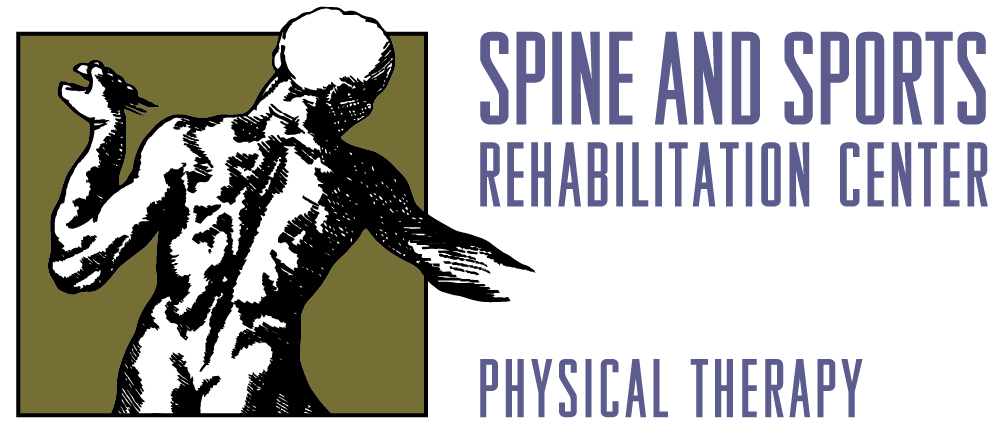Pain Education
What pain is, where it occurs, types of pain,
and what you can do about it.
Painful Scenario
Through my interactions with patients, I’ve learned that many people are unaware of exactly how pain operates when the body responds to an injury.
Let’s suppose that you are lifting a heavy box of books in your basement. You bend over and get a healthy grip on the box. Then, as you ascend from your power squat, your back muscles start seizing. Believe it or not, the intense pain that you feel does not actually exist in the back itself.
One possibility is that your back muscles spasmed in response to a tear (minor or major) of the disc in between the joints. This sends a message to your brain. Your brain makes a determination whether or not the injured back is worthy of attention and sends a message (pain) that will make you I pay attention to your back or drop you to your knees.
What is Pain?
Pain is a message from the brain that makes you seek help for a troubled area. It’s actually an interpretation of what your body needs. In an effort to protect your back, the muscles spasm (as a result of the pain signal), to prevent you from moving too much, causing further injury.
Included in the response are emotions coupled with the pain —anxiety about re-hurting the back, anger that you could be so careless, sadness that your new books will not have a prime spot in your basement, or maybe happiness (doubtful) because your back pain gives you an excuse to avoid attending your step-aunt’s harmonica recital! Your emotions have no way of telling you when your back is fully healed and ready for you to move again. They may even interfere with returning to a normal level of activity when fear or anxiety are associated with the painful incident. Emotions are tied to the pain signal, which is based on the brain’s interpretation (or overinterpretation) of pain, which is based on the actual or perceived status of the injured body part. It’s like a game of telephone that is occurring inside of your body. At any junction in the telephone game, the signal could be misinterpreted.
What about my MRI?
The most interesting part of the equation is that a disc injury (colloquially referred to as a slipped disc or bulging disc) may not even be a cause for concern. There was a famous study performed in 1994 that involved taking an MRI of 98 people with no back pain at all. 52 percent of the people had a disc bulge present at least one level. 36 percent had disc bulges at multiple levels (Jensen et al, 1994). Again, these were people with no pain.
Is Pain Necessary?
You may be thinking, “Then why do we need pain?” It is highly beneficial to have the pain response because it communicates to you that something is wrong. There are some people who are born without the ability to feel pain and they often do not survive into adulthood (Cox, 2017). These people have no pain signal or mechanism to let them know something is wrong with their body. The brain of a person with an intact pain system is going to do everything it can to help protect them.
Types of Pain
Nevertheless, problems with the pain signal can arise. There are times when there is not much damage in the body, or the body has healed itself, but the person will still feel excruciating pain for an extended period of time. In the physical therapy community, this is called chronic pain. Patients who have chronic pain will still feel significant pain in an area that was hurt, even if there is no longer damage to the muscle or ligament (Explain Pain, 2003). Since the pain response originates in the brain, they will still, for a multitude of reasons, feel that the afflicted part of the body still hurts. Chronic pain can become an issue if it prevents you from dealing with other day-to-day problems. The pain could be a barrier to dealing with issues at work, family problems, or other health needs. If you have chronic pain, it requires a skilled physical therapy professional to help you manage the other factors involved.
In addition to chronic pain, there are other instances where pain signals can be slightly misinterpreted by the brain. Referred pain occurs when multiple sensory nerves (afferent nerves) from different body areas converge on the same area of the spinal cord as other nerves that connect to other body parts. Put simply, referred pain occurs when one structure is hurt, but due to the body’s weird nerve connections, the brain is unable to differentiate between the body part that is affected (your back) and the body part where the pain is felt (maybe your glute muscles). A physical therapist who understands how to tease out these connections to reveal which underlying issues are contributing to persistent pain can help.
How to Manage Pain
Pain can be successfully treated with cognitive-behavioral therapy, manual therapy, neuromuscular re-education, postural exercises, and much more in physical therapy. If you feel that you have issues with pain or you would like to learn more, contact the knowledgeable physical therapists at Spine and Sports Rehabilitation in Timonium, MD. They will be more than thrilled to answer all of your questions.
References
Butler, D., Moseley, L. Explain Pain. 2003. NOI Group.
Cox, David. The curse of the people who never feel pain. 2017. Retrieved from https://www.bbc.com/future/article/20170426-the-people-who-never-feel-any-pain
Jensen, MC., Brant-Zawadzki, MN., Obuchowski, N. Modic, MT., Malkasian, D., Ross, JS. Magnetic Resonance Imaging of the lumbar spine in people without back pain. New England Journal of Medicine. 1994 Jul 14;331(2):69-73. Retrieved from https://www.ncbi.nlm.nih.gov/pubmed/0008208267
